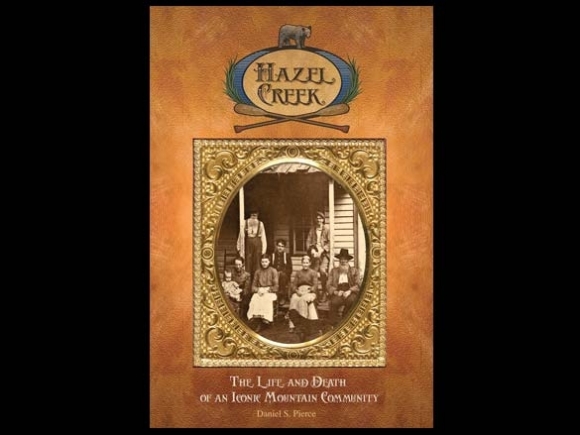New book revives Hazel Creek history

A new book has hit the shelves exploring the history of the Hazel Creek community, which is now one of the Great Smoky Mountains National Park’s most isolated areas.
Hazel Creek: The Life and Death of an Iconic Mountain Community, is written by UNC Asheville history professor Daniel Pierce and published by the Great Smoky Mountains Association. It takes readers on a journey from the first white settlers’ arrival in Cades Cove in the 1830s, through the economic boom and bust from the logging industry and to Hazel Creek’s complicated, controversial place in today’s Western North Carolina.
“I’ve long had an interest in Hazel Creek; it’s an incredibly beautiful place,” said Pierce, who has been known to wet a line in Hazel Creek on more than one occasion. “And I’ve long had a historical interest in a place, which has so many wonderful stories.”
The book introduces characters such as Moses Proctor, the first white settler there who was probably more akin to a squatter, and moves forward to the area’s settlement by a number of families. From there, Hazel Creek underwent a boom with the arrival of the logging industry but became a ghost town when all the timber was cut. The area changed yet again in the 1940s, when the Tennessee Valley Authority dammed the Little Tennessee River and flooded the road to Hazel Creek. The people moved out but were promised that a new road would be built to the area. As any Swain County native can attest, the promise was never kept.
“That story still moves me,” Pierce said. “I think it’s important that that promise be honored, but at the same time I look at Hazel Creek and what it means to me now. It’s really the fulfillment of a promise, a promise that the National Park Service made to protect significant places for future generations.”
Pierce will discuss the book further during several events planned in Western North Carolina this summer, the soonest of which is a presentation at 10 a.m. June 9 at the Bryson City Visitor Center.
Proceeds from the publication support the park. The book is available at a variety of local bookstores, at bookstores in the Smokies and online at www.smokiesinformation.org.





